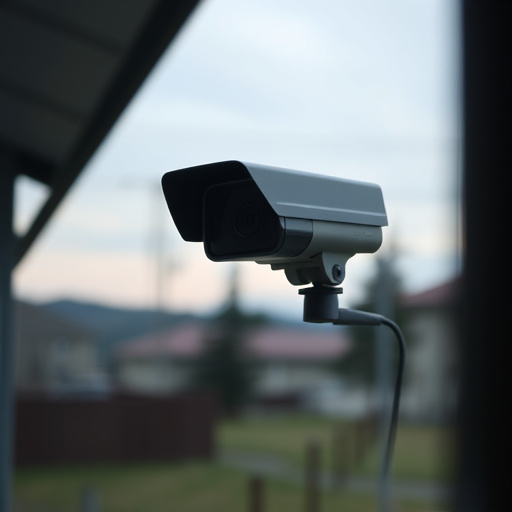To combat hidden recording devices, deploy Most Realistic Looking Security Decoys like smoke detectors and fake cameras as distractions. Combine with RF detectors, thermal imaging, advanced visual decoys, signal analysis using AI, and employee awareness to ensure comprehensive protection against unauthorized recordings.
Hidden recording devices pose a significant threat to privacy. This article delves into innovative scanning methods used to uncover these clandestine listeners. We explore three key strategies: understanding hidden device signals, employing most realistic looking security decoys, and utilizing advanced signal analysis techniques. By combining these approaches, individuals and organizations can better protect their conversations and personal information from unseen recordings.
- Understanding Hidden Recording Device Scanning
- Visual Decoys: Most Realistic Security Mimicry
- Advanced Signal Analysis Techniques
- Preventing and Detecting Unseen Recordings
Understanding Hidden Recording Device Scanning
Hidden recording device scanning requires a strategic and discreet approach, especially when dealing with advanced and cleverly concealed devices. Understanding the methods behind identifying these hidden microphones involves familiarizing oneself with various scanning techniques and tools. One effective strategy is to utilize the most realistic looking security decoys available in the market today. These decoys, designed to mimic everyday objects like smoke detectors or power outlets, serve as a clever distraction, drawing potential perpetrators’ attention away from actual monitoring equipment.
By deploying these decoys strategically around targeted areas, individuals or organizations can create a false sense of security for hidden recording devices. Advanced scanning tools, such as radio frequency (RF) detectors and thermal imaging cameras, play a crucial role in this process. RF detectors are effective against wireless microphones, while thermal imaging technology helps visualize heat signatures that may indicate the presence of electronic devices. Combining these methods creates a robust defense mechanism, ensuring comprehensive coverage during hidden recording device scanning operations.
Visual Decoys: Most Realistic Security Mimicry
Visual decoys, specifically designed to mimic real security equipment, are becoming increasingly sophisticated and offer an intriguing solution for preventing unauthorized recording. These highly realistic looking devices, often crafted with advanced materials and craftsmanship, can be strategically placed to deter potential hidden camera users. From fake security cameras that blend seamlessly into the environment to lifelike mannequins equipped with motion sensors, these visual decoys provide an effective psychological deterrent.
By using real-looking replicas, organizations and individuals can enhance their overall security posture without relying solely on technical measures. The effectiveness lies in their ability to mislead and confuse potential intruders, making it harder for them to identify and operate hidden recording devices. This innovative approach to security is particularly valuable in high-risk areas, ensuring that sensitive information remains protected from prying eyes.
Advanced Signal Analysis Techniques
In the pursuit of undetected surveillance, advanced signal analysis techniques play a pivotal role in enhancing the effectiveness of hidden recording device signal scanning methods. One innovative approach involves the use of sophisticated algorithms to mimic natural noise patterns, creating what are considered the most realistic looking security decoys. These algorithms can analyze and replicate environmental signals, making it increasingly challenging for target individuals to discern between genuine and artificial data.
By employing machine learning and artificial intelligence, these techniques adapt and evolve with time, keeping pace with evolving technology. This not only ensures better accuracy in signal detection but also prevents the development of countermeasures that could compromise the integrity of surveillance operations. The integration of such advanced analysis methods significantly bolsters security protocols, making it easier to identify and neutralize hidden recording devices while maintaining operational secrecy.
Preventing and Detecting Unseen Recordings
Preventing and detecting hidden recording devices has become a complex task in today’s digital age, where sophisticated technology can be used surreptitiously. To combat this, advanced scanning methods are employed to uncover unseen recordings and ensure privacy. One of the most effective strategies is the use of realistic security decoys. These decoys, designed to mimic genuine objects like smoke detectors or power strips, are strategically placed to attract hidden cameras or microphones. By integrating cutting-edge sensors and AI algorithms, these decoys can actively monitor their surroundings and alert users to any suspicious activity, including unauthorized recordings.
Additionally, advanced signal scanning technologies utilize radio frequency (RF) analysis and infrared detection to identify the subtle electromagnetic signatures emitted by hidden recording devices. These methods are particularly useful in high-security areas where visual inspections might not be feasible. By combining these techniques with regular physical checks and employee awareness programs, organizations can significantly reduce the risk of unseen recordings and protect sensitive information from leaking out.
Hidden recording device scanning methods have evolved significantly, from visual decoys that utilize most realistic looking security mimicry to advanced signal analysis techniques. By combining these innovative approaches with proactive prevention strategies, individuals and organizations can better protect their privacy and confidentiality in today’s digital era. Remember that staying informed about the latest detection methods is key to mitigating risks posed by unseen recordings.
